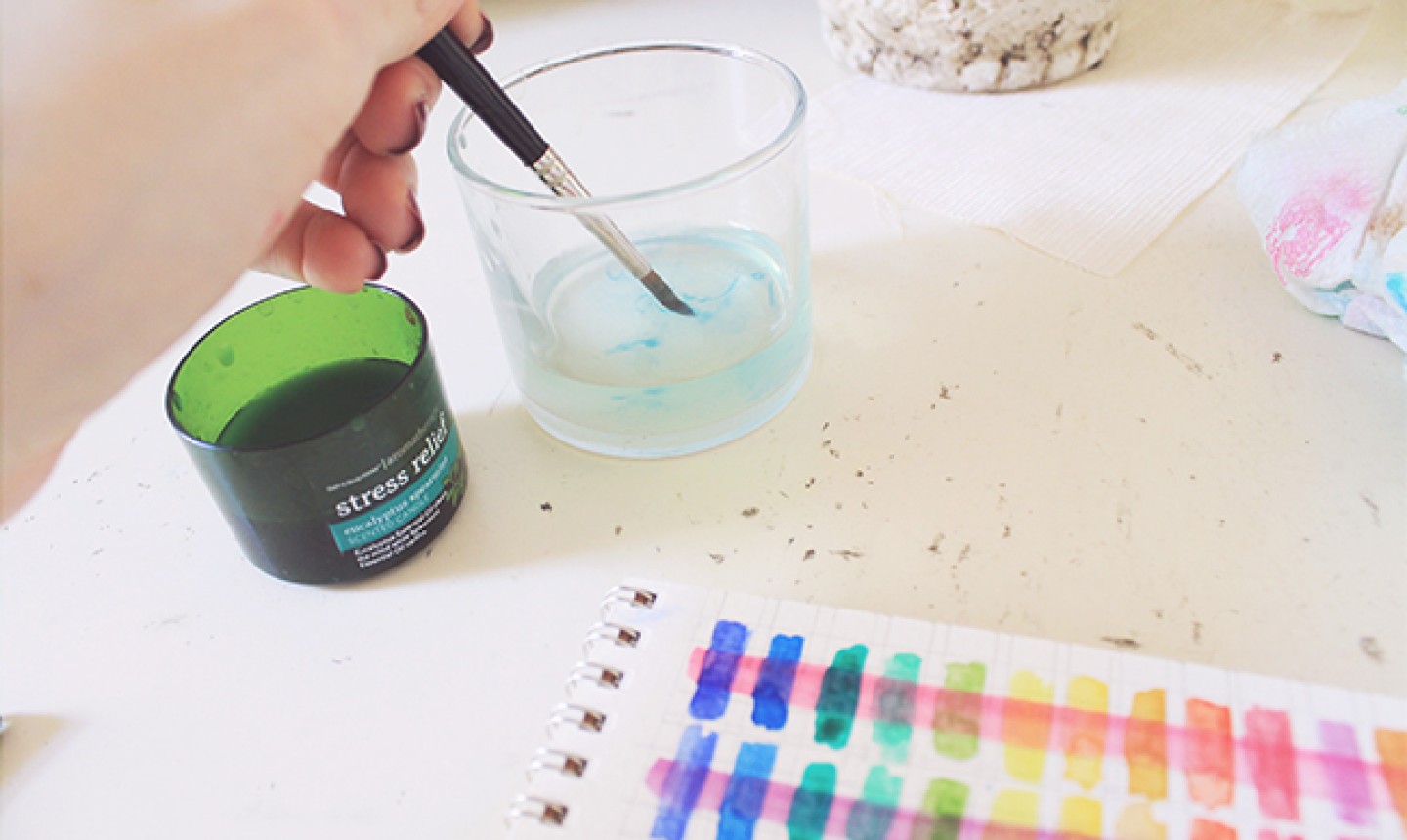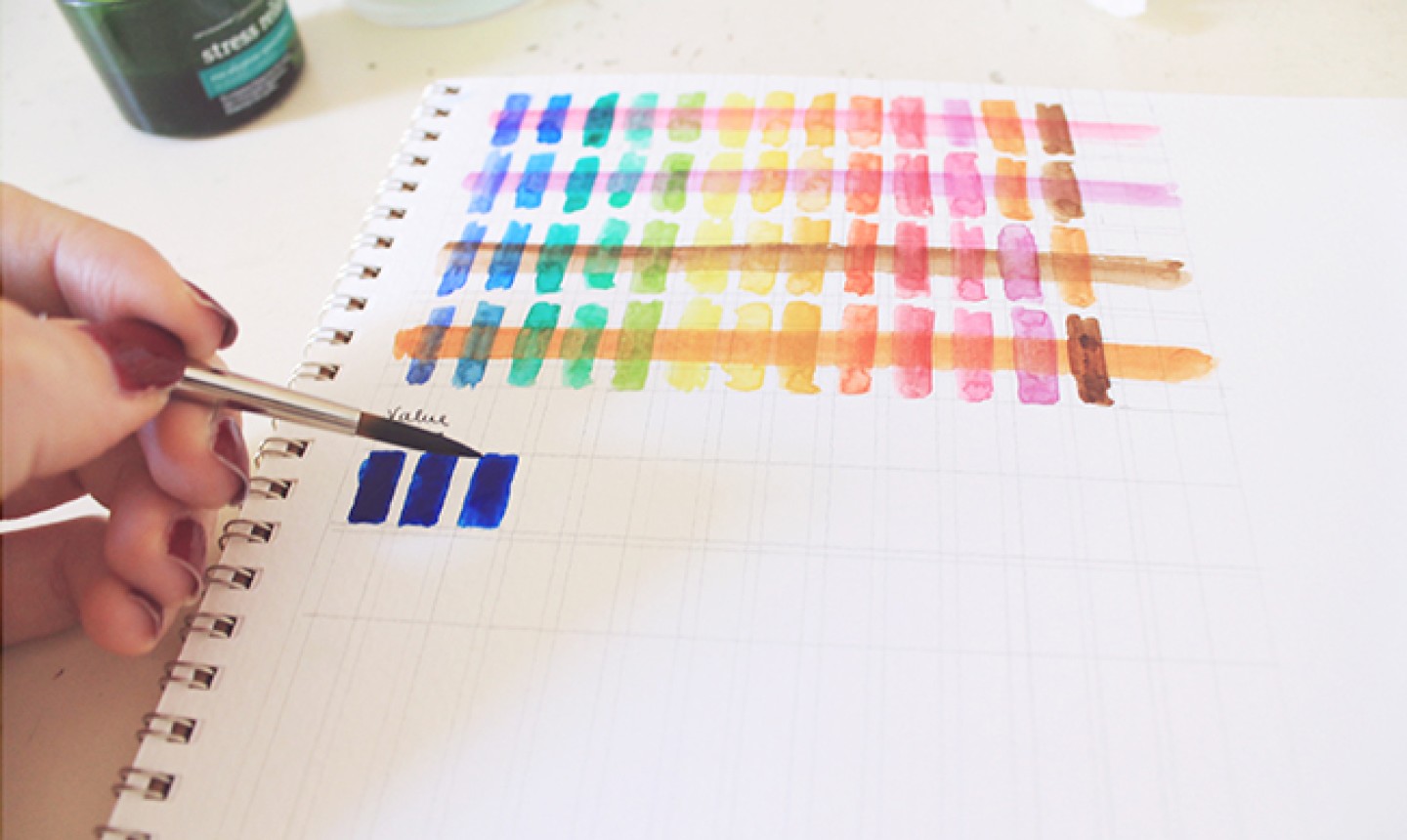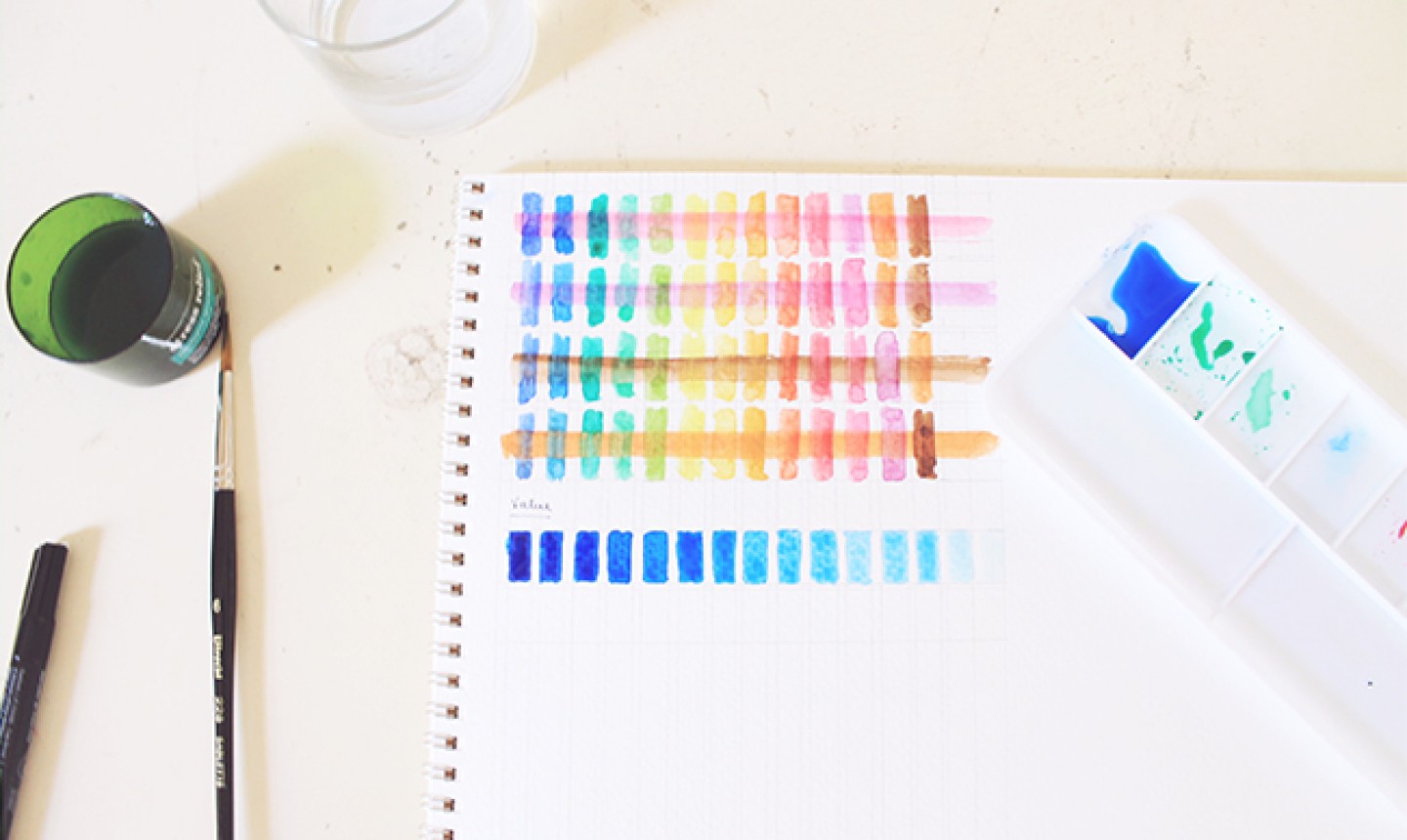
When it comes to value, watercolors are incredibly versatile. Color value simply refers to the levels of darkness and lightness of any particular color, and depending on the amount of water you use to pick up a hue, your brushstroke can be bright and saturated, incredibly sheer or somewhere in between.
If you’re just starting to paint with watercolor, it can be hard to know what paint-to-water ratio you should use. But with a simple exercise, you’ll learn to pick up the right amount of water to get the value you want. All you need is some paint, water and paper.

Pick up your color (we used Phthalo Blue) in its most saturated form, with no water on the brush or in the pan. Paint the first swatch onto your paper.

Add a small amount of water to the color on your palette to slightly water it down, creating the next value on your scale.

Continue mixing in more and more water to your palette after you paint each new swatch. For the first three or four, the difference in value will be barely noticeable. But as you keep watering down your color, the gradient will begin to look lighter.

Repeat this process until the color swatches become almost clear. Usually, you’ll reach this point after about 14 or 15 swatches.

Let it dry, then keep your sheet as a reference! You can do this exercise with any color, and you can extend the gradient even further by mixing the pure color with a dark neutral tint like black. This will create darker tones without changing the hue of the color.
Looking to get started with watercolors? Check out the class Startup Library: Watercolors below!


Share tips, start a discussion or ask one of our experts or other students a question.
Already a member? Sign in
No Responses to “Here's an Easy Way to Test Color Value in Watercolor Paints”